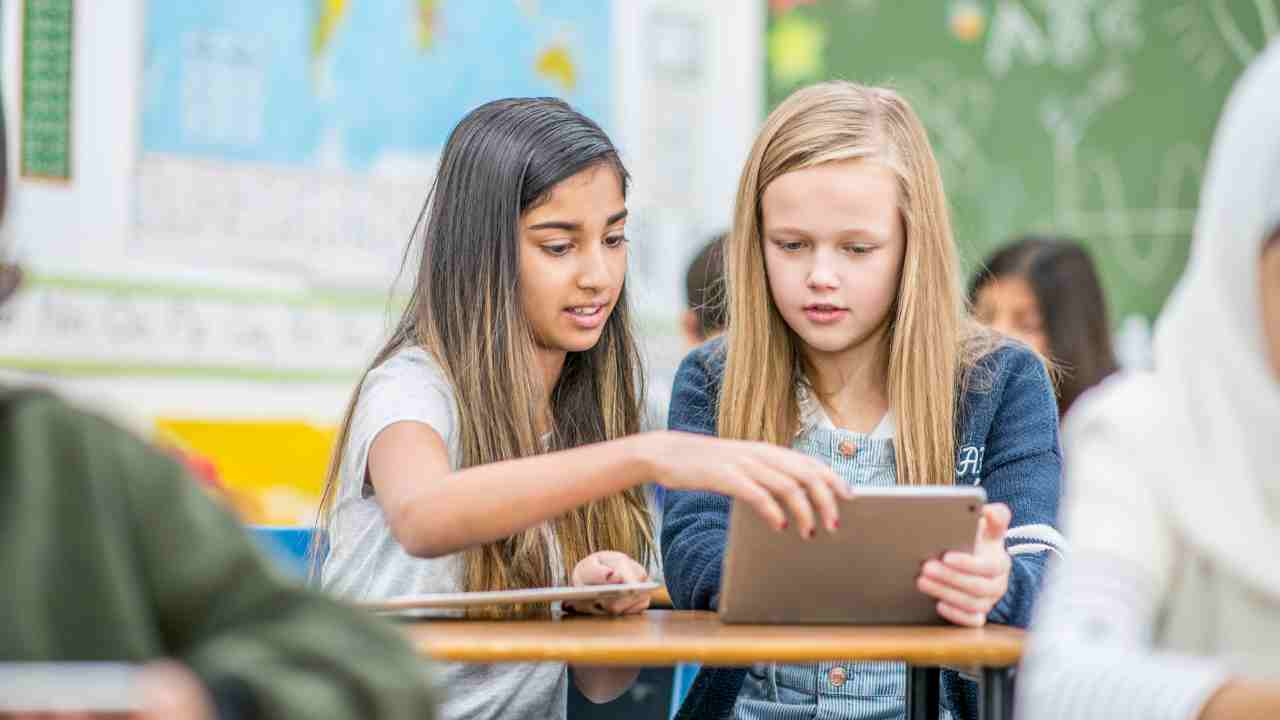Digital technologies have recently changed our habits in many aspects of our lives, and these changes are becoming more rapid. The most significant influence is on the learning process, both individual and group.
Innovative tools are changing the learning environment because they significantly benefit students. There are numerous modern practices to improve education, increase access to knowledge, foster collaborative skills, and instill positive values.
A learning environment has been digitized as never before. A personal coach or a literature review writer can be available online now. Traditional practices seem increasingly outdated, as evidenced by the latest trends in educational technology, which aim to transform the classroom into an interactive and technology-immersed space. This article will discuss the use of technological trends in learning, their characteristics, and how they influence modern education.
Mobile Devices
In addition to instant communication, fast internet access, and consulting social networks, mobile devices can contribute to educational training by facilitating learning. Mobile technology provides numerous opportunities. It enables students, for example, to study at different locations and at various times. Another benefit is making learning more independent. Furthermore, there are opportunities for collaborative spaces. Educational content can be centrally stored on web servers, and participants can easily access it through their mobile devices.
Artificial Intelligence
Artificial intelligence has a significant impact on learning models. It provides a personalized approach to an unlimited number of learners, assisting in making education as customized as possible. This may appear to be science fiction initially, but AI has already been implemented. Virtual learning assistants provide one-on-one tutoring using artificial intelligence, machine learning, and natural language processing. When explaining a concept, they can communicate with a student, ask questions, provide open-ended answers, and give instant feedback. AI systems even assess the student’s work and provide accurate results.
Virtual Reality
Generated by computer technology, virtual reality is the visual perception of a real-looking environment that gives the user the sensation of being immersed in it. It has been one of the most effective technological innovations in recent years since it makes learning more appealing and interactive. It enables us to “live in first person” historical scenarios, learn about countries and capitals by traveling to the locations without leaving the classroom, understand blood flow in the human body by pretending to be a red blood cell, and so on.
Augmented reality is all about using various devices to add a virtual component to the real. It is common nowadays to find QR codes in books and exhibitions that can be scanned to access additional content. These contents are an additional piece of data to an already tangible reality. Their role in education is to emphasize knowledge, expand information, and provide interactive activities.
Digital Media
Learning by reading books and writing essays for a class is becoming obsolete. It is an outmoded method of education. Digital technology advancements are allowing teachers to create new learning approaches. Online environments, in particular, enable learners to provide personalized content and new forms of collaborative learning.
Modern students, however, require access to digital content and the ability to create it. Using digital platforms offers better data visualization and dynamic storytelling. Besides, it allows for improving skills and knowledge by getting quality assistance and personal interaction with a literature review writer. As a result, teachers will most likely develop new methods for assessing media-rich academic assignments while also investigating the technology used to create them.
Online Education
Online education experienced remarkable growth in the middle of the first decade of the 21st century. Today, there is a common trend in the supremacy of the online channel for sharing knowledge, particularly regarding teacher-student and student-student interaction. However, this is a tendency with increased participation. Users do not limit themselves to reading or viewing content but get involved by producing their content and publishing it with simple tools.
Video Games
In recent years, society’s perception of video games has shifted dramatically from a mere recreational activity to an educational tool. Video games have been presented to improve memory, logic, concentration, focus, and planning, as well as to develop other skills such as coordination, motor skills, and spatial orientation.
Their ability to provide multi-sensory experiences enables students to work independently or collaboratively, acquiring new knowledge and making critical decisions without putting themselves in danger of the real world. The gaming environment provides realistic simulations that make students face challenging opportunities and allows them to use classroom skills in practice within the virtual world.
3D Printers
Although this technological tool has yet to be widely used in classrooms, the truth is that 3D printers have enormous educational benefits. They are one of the most promising educational bets for the near future. Imagine being able to create the graphic design that the teacher has taught you in class. The 3D effect can significantly aid certain subjects by materializing a concept studied in a real object.
This tool’s main benefits include fostering creativity and problem-solving skills, increasing participation, capturing students’ interest, facilitating the teacher’s task, and promoting collaboration between different subjects and departments.
E-Learning
E-Learning is an educational process that takes place over the Internet and is distinguished by student-teacher relationships. Studying is getting more personalized, thanks to one-on-one interaction with a tutor or a literature review writer. Furthermore, distance learning, also known as blended learning, has enabled training to reach more people. As a result, its most notable advantages are removing space-time barriers, flexibility, a student-centric approach, regular content updates, and continuous communication.
Conclusion
Implementing the tools that are changing education has resulted in a new challenge. It’s worth considering whether they are beneficial to evolution or detrimental to the learning process in its conventional sense. Without a doubt, new technologies positively transform education. These media enhance individual interaction and students’ learning pace by making a learning environment more realistic. However, we cannot believe incorporating innovative tools without prior selection based on sound criteria will favor the intended type of learning.







